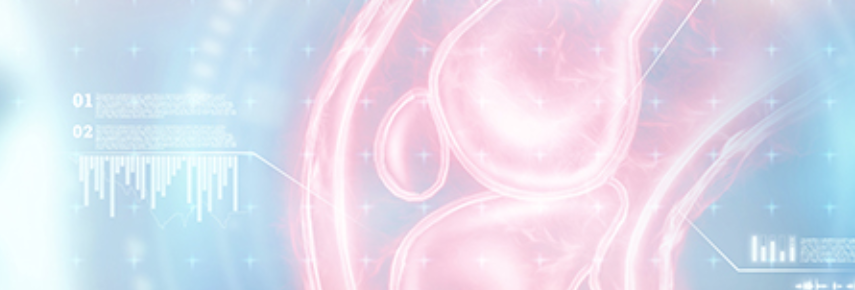Yifan Wang, Chuan Zhou, Lei Ying, Elizabeth Lee, Heang-Ping Chan, Aamer Chughtai, Lubomir M Hadjiiski, Ella A Kazerooni
{"title":"在基于放射组学的强化学习中利用连续低剂量 CT 扫描改善基线筛查中的肺癌早期诊断。","authors":"Yifan Wang, Chuan Zhou, Lei Ying, Elizabeth Lee, Heang-Ping Chan, Aamer Chughtai, Lubomir M Hadjiiski, Ella A Kazerooni","doi":"10.1148/ryct.230196","DOIUrl":null,"url":null,"abstract":"<p><p>Purpose To evaluate the feasibility of leveraging serial low-dose CT (LDCT) scans to develop a radiomics-based reinforcement learning (RRL) model for improving early diagnosis of lung cancer at baseline screening. Materials and Methods In this retrospective study, 1951 participants (female patients, 822; median age, 61 years [range, 55-74 years]) (male patients, 1129; median age, 62 years [range, 55-74 years]) were randomly selected from the National Lung Screening Trial between August 2002 and April 2004. An RRL model using serial LDCT scans (S-RRL) was trained and validated using data from 1404 participants (372 with lung cancer) containing 2525 available serial LDCT scans up to 3 years. A baseline RRL (B-RRL) model was trained with only LDCT scans acquired at baseline screening for comparison. The 547 held-out individuals (150 with lung cancer) were used as an independent test set for performance evaluation. The area under the receiver operating characteristic curve (AUC) and the net reclassification index (NRI) were used to assess the performances of the models in the classification of screen-detected nodules. Results Deployment to the held-out baseline scans showed that the S-RRL model achieved a significantly higher test AUC (0.88 [95% CI: 0.85, 0.91]) than both the Brock model (AUC, 0.84 [95% CI: 0.81, 0.88]; <i>P</i> = .02) and the B-RRL model (AUC, 0.86 [95% CI: 0.83, 0.90]; <i>P</i> = .02). Lung cancer risk stratification was significantly improved by the S-RRL model as compared with Lung CT Screening Reporting and Data System (NRI, 0.29; <i>P</i> < .001) and the Brock model (NRI, 0.12; <i>P</i> = .008). Conclusion The S-RRL model demonstrated the potential to improve early diagnosis and risk stratification for lung cancer at baseline screening as compared with the B-RRL model and clinical models. <b>Keywords:</b> Radiomics-based Reinforcement Learning, Lung Cancer Screening, Low-Dose CT, Machine Learning © RSNA, 2024 <i>Supplemental material is available for this article.</i></p>","PeriodicalId":21168,"journal":{"name":"Radiology. Cardiothoracic imaging","volume":"6 3","pages":"e230196"},"PeriodicalIF":4.2000,"publicationDate":"2024-06-01","publicationTypes":"Journal Article","fieldsOfStudy":null,"isOpenAccess":false,"openAccessPdf":"https://www.ncbi.nlm.nih.gov/pmc/articles/PMC11211947/pdf/","citationCount":"0","resultStr":"{\"title\":\"Leveraging Serial Low-Dose CT Scans in Radiomics-based Reinforcement Learning to Improve Early Diagnosis of Lung Cancer at Baseline Screening.\",\"authors\":\"Yifan Wang, Chuan Zhou, Lei Ying, Elizabeth Lee, Heang-Ping Chan, Aamer Chughtai, Lubomir M Hadjiiski, Ella A Kazerooni\",\"doi\":\"10.1148/ryct.230196\",\"DOIUrl\":null,\"url\":null,\"abstract\":\"<p><p>Purpose To evaluate the feasibility of leveraging serial low-dose CT (LDCT) scans to develop a radiomics-based reinforcement learning (RRL) model for improving early diagnosis of lung cancer at baseline screening. Materials and Methods In this retrospective study, 1951 participants (female patients, 822; median age, 61 years [range, 55-74 years]) (male patients, 1129; median age, 62 years [range, 55-74 years]) were randomly selected from the National Lung Screening Trial between August 2002 and April 2004. An RRL model using serial LDCT scans (S-RRL) was trained and validated using data from 1404 participants (372 with lung cancer) containing 2525 available serial LDCT scans up to 3 years. A baseline RRL (B-RRL) model was trained with only LDCT scans acquired at baseline screening for comparison. The 547 held-out individuals (150 with lung cancer) were used as an independent test set for performance evaluation. The area under the receiver operating characteristic curve (AUC) and the net reclassification index (NRI) were used to assess the performances of the models in the classification of screen-detected nodules. Results Deployment to the held-out baseline scans showed that the S-RRL model achieved a significantly higher test AUC (0.88 [95% CI: 0.85, 0.91]) than both the Brock model (AUC, 0.84 [95% CI: 0.81, 0.88]; <i>P</i> = .02) and the B-RRL model (AUC, 0.86 [95% CI: 0.83, 0.90]; <i>P</i> = .02). Lung cancer risk stratification was significantly improved by the S-RRL model as compared with Lung CT Screening Reporting and Data System (NRI, 0.29; <i>P</i> < .001) and the Brock model (NRI, 0.12; <i>P</i> = .008). Conclusion The S-RRL model demonstrated the potential to improve early diagnosis and risk stratification for lung cancer at baseline screening as compared with the B-RRL model and clinical models. <b>Keywords:</b> Radiomics-based Reinforcement Learning, Lung Cancer Screening, Low-Dose CT, Machine Learning © RSNA, 2024 <i>Supplemental material is available for this article.</i></p>\",\"PeriodicalId\":21168,\"journal\":{\"name\":\"Radiology. Cardiothoracic imaging\",\"volume\":\"6 3\",\"pages\":\"e230196\"},\"PeriodicalIF\":4.2000,\"publicationDate\":\"2024-06-01\",\"publicationTypes\":\"Journal Article\",\"fieldsOfStudy\":null,\"isOpenAccess\":false,\"openAccessPdf\":\"https://www.ncbi.nlm.nih.gov/pmc/articles/PMC11211947/pdf/\",\"citationCount\":\"0\",\"resultStr\":null,\"platform\":\"Semanticscholar\",\"paperid\":null,\"PeriodicalName\":\"Radiology. Cardiothoracic imaging\",\"FirstCategoryId\":\"1085\",\"ListUrlMain\":\"https://doi.org/10.1148/ryct.230196\",\"RegionNum\":0,\"RegionCategory\":null,\"ArticlePicture\":[],\"TitleCN\":null,\"AbstractTextCN\":null,\"PMCID\":null,\"EPubDate\":\"\",\"PubModel\":\"\",\"JCR\":\"Q1\",\"JCRName\":\"RADIOLOGY, NUCLEAR MEDICINE & MEDICAL IMAGING\",\"Score\":null,\"Total\":0}","platform":"Semanticscholar","paperid":null,"PeriodicalName":"Radiology. Cardiothoracic imaging","FirstCategoryId":"1085","ListUrlMain":"https://doi.org/10.1148/ryct.230196","RegionNum":0,"RegionCategory":null,"ArticlePicture":[],"TitleCN":null,"AbstractTextCN":null,"PMCID":null,"EPubDate":"","PubModel":"","JCR":"Q1","JCRName":"RADIOLOGY, NUCLEAR MEDICINE & MEDICAL IMAGING","Score":null,"Total":0}
引用次数: 0

 求助内容:
求助内容: 应助结果提醒方式:
应助结果提醒方式:


